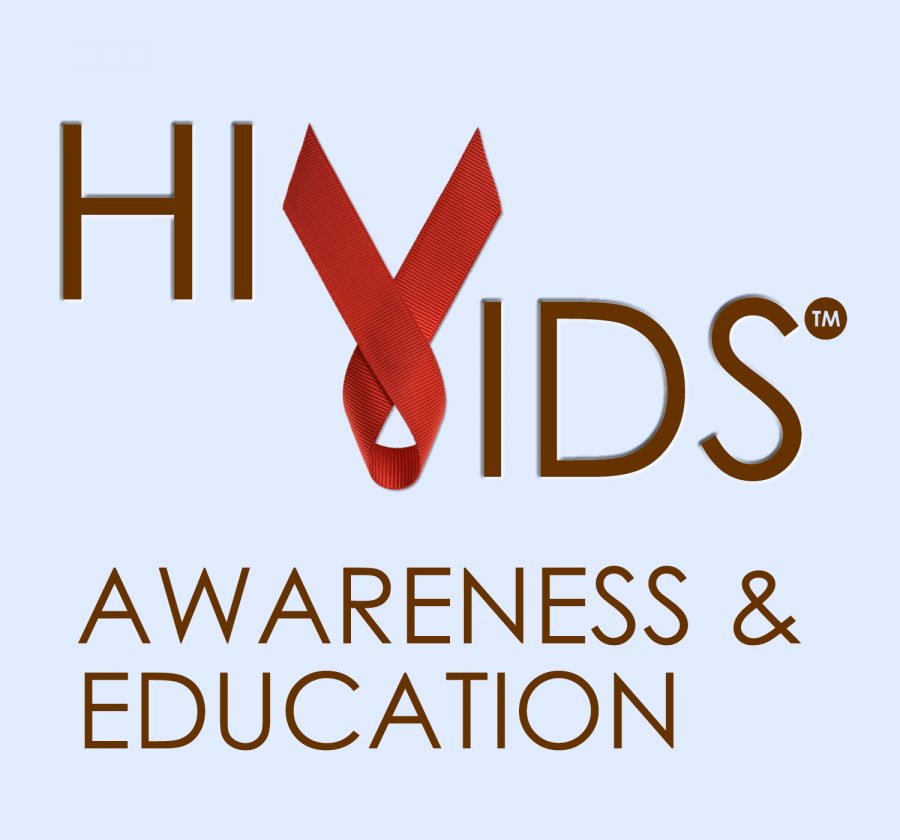Remembering the Victims of the AIDS Epidemic
The thirty-second World AIDS Day was celebrated across the globe on December 1st. Since 1988, the World Health Organization (WHO) has recognized December 1st as World AIDS Day following the tragedy of the AIDS outbreak of the 1980s. According to Avert, a UK-based AIDS organization, in the 1980s alone AIDS infected over 100,000 Americans, and infected hundreds of thousands of people on all six inhabited continents of the world (2).
AIDS stands for “acquired immune deficiency syndrome.” The term AIDS was first used by the CDC in 1982. It is estimated that AIDS first passed to humans from chimpanzees in Africa in the 1920s (2). Before 1980, not much was known about the disease or its avenues of transmission. HIV (human immunodeficiency virus), the disease that is the precursor to AIDS, was not discovered and connected to AIDS until 1983, a year after AIDS was first acknowledged and tracked by the CDC (8). HIV destroys so many of the body’s T-Cells that one then develops AIDS. Once HIV develops into AIDS, the body is incredibly vulnerable to cancers and other life-threatening infections (3). HIV cannot be spread through casual contact or saliva, but it can be spread by blood, semen, vaginal fluid, breastmilk, and other bodily fluids. It is typically contracted through unprotected sex, but can also be contracted by sharing needles (4).
The epidemic in the United States began in 1981, when five previously healthy gay men were diagnosed with PCP, a rare lung infection. Shortly after, a group of men in New York and California were diagnosed with an aggressive cancer, Kaposi’s Sarcoma. More and more cases of acquired immune deficiency were reported, 270 by the end of 1981, and 121 of those people died (2). Things did not get much brighter the following year, as more cases of immune deficiency were reported to be targeting gay men specifically. The increase in cases caused the CDC to then begin referring to the disease as AIDS in the fall of 1982. Cases were then tracked (2).
The first cases of AIDS in women were discovered in 1983, proving that the disease was not exclusive to the gay community. In November of ‘83 the WHO met to discuss AIDS for the first time and create an international surveillance program. The CDC also published recommendations for healthcare workers to help them limit transmission (2). In 1985, the FDA licensed the first commercial blood test to detect HIV antibodies, and in April of that year, the WHO and the US Department of Health and Human Services hosted the first International AIDS Conference in Atlanta, GA. Despite all this good news, Ryan White, a thirteen-year-old from Indiana, contracted AIDS from contaminated blood products used to treat his hemophilia, and it eventually killed him in 1990 when he was just eighteen years old. Famous actor Rock Hudson died from AIDS in the same year, leaving $250,000 to help create the American Foundation for AIDS Research. By the end of ‘85, every inhabited region in the world had reported at least one case of AIDS. In December 1987, there were 47,022 cases of AIDS in the United States alone. By 1989? 100,000 (2). Ten years later, in 1999, 14 million people had died from AIDS (11).

AIDS was often found before HIV because HIV has less of an impact on the body than AIDS. Today, 1 in 7 individuals living with HIV do not know they have it (1). Freddie Mercury, frontman of Queen, had no idea he was HIV positive until he was diagnosed with AIDS in 1987 (9). He died from AIDS-related pneumonia in 1991. American artist Keith Haring was also unaware of his HIV-positive status, was then diagnosed with AIDS in 1988, and died from it in 1990 (10).

Having AIDS and being HIV-positive in the 1980s and 1990s was incredibly difficult. Ryan White was banned from going to school after being diagnosed with AIDS, and sued to be allowed to come back. Gay men are disproportionately affected by the disease, and it was first known as “gay-related immune deficiency” and then by the public as the “gay plague” (4). Being gay during the ’80s was already highly stigmatized, and being the victims of a novel disease that infected them first by chance did nothing but make matters worse. The US put a travel ban on HIV positive individuals and did not allow anyone HIV-positive to immigrate here. This ban lasted from 1987 to 2009, when President Barack Obama had it lifted (3). Gay men were banned from donating blood until 2015, and even now they must be celibate for a year before donating. The thirty-year ban and the decision to not totally lift it are unfounded, as HIV testing was available a year before the ban was first instituted and blood continues to be routinely tested for HIV (3). People with drug abuse problems and hemophilia also struggled with the epidemic, since it passed through the blood, further stigmatizing addiction and disabilities, and being diagnosed with AIDS forcibly outed many gay Americans (7, 5). AIDS and HIV-positive individuals and their allies faced job, housing, and school discrimination throughout the 80s (4).
In 1982, President Ronald Reagan’s Press Secretary laughed about AIDS when asked by a journalist how the President was tracking it, even though the CDC was closely monitoring it as a public health crisis (6). That same year, Congress held their first hearings on AIDS (4). Reagan himself never mentioned the word AIDS at all in his first term, and waited until 1985, four years after the beginning of the epidemic, to acknowledge it, which was when it started to significantly affect hemophiliacs and drug users (4, 7). At that point, 12,529 Americans had died (13). Sufficient federal funding for research did not come until 1985, and widespread preventative education did not come until 1987 (12). Reagan did not establish a commission to investigate the epidemic until he was pressured to do so in 1987, taking action too late, as 47,000 people had already become infected by 1987 (5).
The negligence of the federal government cost the LGBTQ+ community a generation of activists and leaders. It cost them their partners and family members and friends. They helped themselves when the government failed to act, with the first community-based treatment centers, support groups, and clinics popping up as early as 1982 (4). The Gay Men’s Health Crisis was one of these, and it is the world’s oldest HIV/AIDS service organization (7). Activist groups such as ACT UP (AIDS Coalition to Unleash Power) were key in pressuring the government to speed up their response to the AIDS crisis and introduce more medications to save lives, and they showed the American public the devastating effects of anti-gay public health policies (7). They were able to effectively communicate with the public through creative posters and memorable slogans, such as “Silence = Death,” dreamed up by activist Avram Finkelstein, a man who lost his partner to AIDS in 1984.
Scientists ultimately tried their best with the funding they had to make up for this, as Reagan had cut both the NIH and CDC budgets, which greatly frustrated those working with and for these institutions (5). Doctors worked to create testing avenues and medication to help diagnose and treat more HIV-positive individuals. A vaccine was promised by 1986, but was never created (7). However, since the epidemic began in 1981, multiple HIV tests have been created, including saliva, urine, and blood tests (3). The first antiretroviral drug to treat HIV, AZT, came out in 1987. However, it is known today that the amount of AZT a person had to take would result in a toxic overdose (7). Thankfully, safer, more effective medication is available today. Medications like PrEP, a drug taken by HIV-negative individuals to help protect themselves against contracting HIV, as well as ART and HAART, antiretroviral treatment systems that stop the virus from reproducing and prevent virus transmission, have changed the game regarding an extended lifespan for HIV-positive individuals (3). HIV and AIDS are still incurable, but medical advances have helped people like basketball star Magic Johnson live HIV-undetected, meaning they still have HIV but it has virtually disappeared from the body (3).
There was a bit of light at the end of the dark tunnel of federal involvement. President George W. Bush authorized a $15 billion Plan for AIDS Relief in 2003 to help socioeconomically disadvantaged HIV-positive individuals around the world get the treatment they need; 14 million people have access to life-saving medication because of this program (2, 7). This program was a game-changer, as the demographics most affected by HIV are non-wealthy Black, Latinx, and white gay and bisexual men (1). HIV drug prices have dropped significantly since the 1980’s due to the development of generic medications, but without insurance, drug prices can still be too high. Making HIV drugs more affordable is a noble, but very reachable long term goal. The creation of the Affordable Care Act, which covers those who have HIV and AIDS, was a groundbreaking moment in the fight for fair drug prices and comprehensive healthcare.
32.7 million people have died from AIDS since the epidemic began in 1981, more than 700,000 of those being in the United States (11, 7). During the height of the US epidemic, about 1 in 2 people died from AIDS (2, 5). By 1995, AIDS was “the greatest killer of men ages 25-44 in America” (7). Dying from AIDS is a slow, painful process. It is incredibly important to remember the men and women whose lives were taken at the hands of this horrible disease. It is also important to remember the trauma that will be felt by the LGBTQ+ community for generations because of this epidemic, and how Africa’s AIDS crisis is still ongoing and deserves the US’s full attention. Championing for preventive education, lower drug prices, and family planning abroad is a way we can pay it forward to those who are still suffering at the hands of AIDS. Let the 700,000 fellow Americans who have died not have been lost in vain.
- https://www.hiv.gov/hiv-basics/overview/data-and-trends/statistics
- https://www.avert.org/professionals/history-hiv-aids/overview
- https://www.history.com/topics/1980s/history-of-aids
- https://www.khanacademy.org/humanities/us-history/modern-us/1980s-america/a/emergence-of-the-aids-crisis
- https://www.history.com/news/aids-epidemic-ronald-reagan
- https://www.vox.com/2015/12/1/9828348/ronald-reagan-hiv-aids
- https://www.nbcnews.com/feature/nbc-out/lgbtq-history-month-early-days-america-s-aids-crisis-n919701
- https://www.theaidsinstitute.org/education/aids-101/where-did-hiv-come-0
- https://theconversation.com/the-freddie-mercury-story-that-goes-untold-in-bohemian-rhapsody-112340#:~:text=Diagnosed%20in%201987%2C%20Mercury%20didn,people%20with%20HIV%20and%20AIDS.
- https://visualaids.org/artists/keith-haring
- https://www.unaids.org/en/resources/fact-sheet#:~:text=75.7%20million%20%5B55.9%20million%E2%80%93100,the%20epidemic%20(end%202019).
- https://www.cdc.gov/mmwr/preview/mmwrhtml/mm5021a2.htm
- https://www.amfar.org/thirty-years-of-hiv/aids-snapshots-of-an-epidemic/
Your donation will support the student journalists of Parkland High School. Your contribution will allow us to purchase equipment and cover our annual website hosting and printing costs.

Gabby is a senior, and this is her second year writing for the Parkland Trumpet. She enjoys writing about politics and current events. She is...






